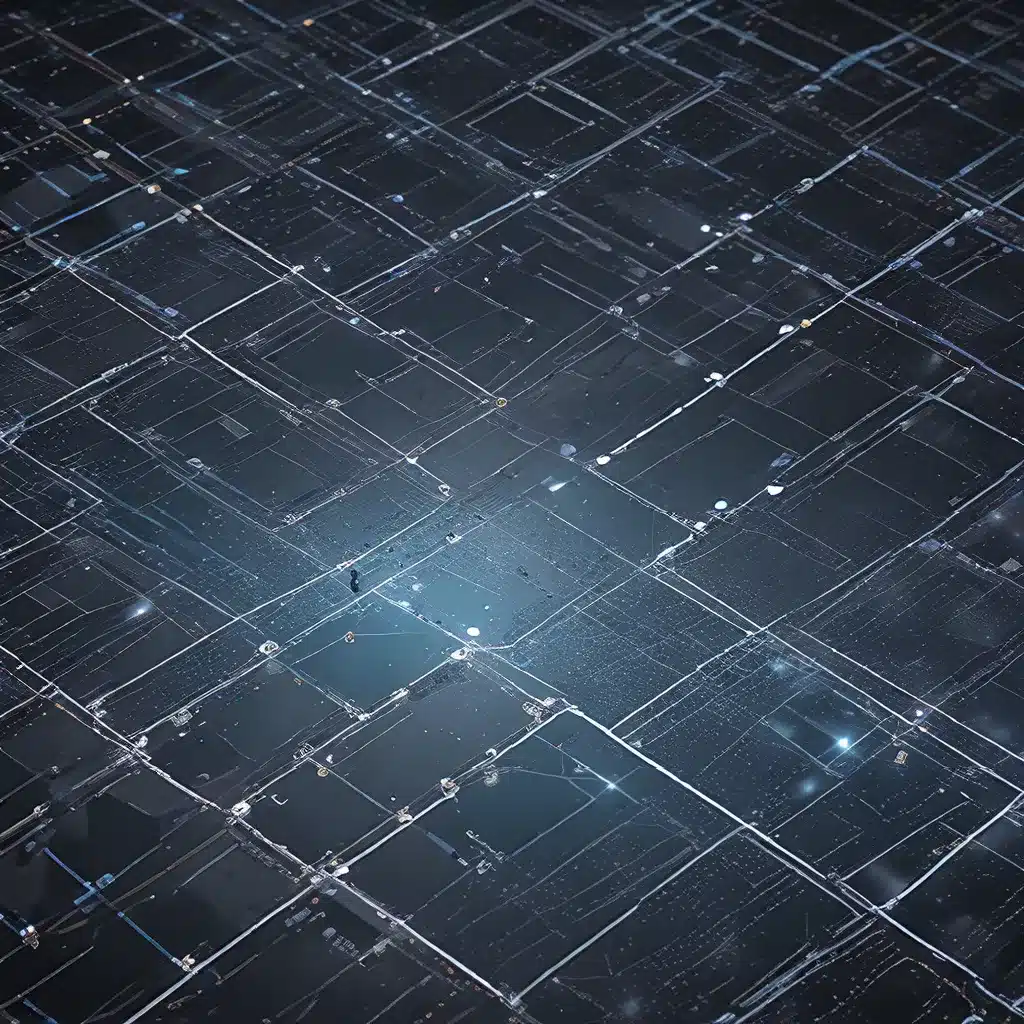
Sensor Networks and the Rise of IoT
Sensor networks have become an integral part of the Internet of Things (IoT) landscape, enabling a wide range of applications across industries. From smart cities and environmental monitoring to industrial automation and healthcare, sensor networks are revolutionizing how we collect, analyze, and act upon data in the digital age.
At the heart of these sensor networks lies the challenge of optimal sensor placement and coverage. Determining the most effective and efficient distribution of sensors within a given environment is crucial for ensuring comprehensive data collection, reliable system performance, and energy-efficient operations.
In this article, we will explore the distributed optimization techniques that are shaping the future of sensor network design and IoT applications. We will delve into the key considerations, emerging technologies, and real-world case studies that are driving the field forward.
Principles of Sensor Network Design
Designing an effective sensor network involves balancing a variety of factors, including coverage, connectivity, energy consumption, and cost. Distributed optimization techniques offer a powerful approach to addressing these challenges, leveraging the inherent decentralized nature of sensor networks.
One study highlights the importance of sensor placement optimization, which can significantly improve the overall performance of a sensor network. By strategically positioning sensors, the network can achieve maximum coverage while minimizing the number of required sensors and energy consumption.
These distributed optimization algorithms often rely on mathematical and computational approaches, such as game theory, evolutionary algorithms, and swarm intelligence. These techniques enable autonomous decision-making within the sensor network, allowing for adaptive and resilient systems that can respond to changing environmental conditions or system requirements.
Emerging Trends in Sensor Network Design
As the IoT landscape continues to evolve, new trends and technologies are shaping the future of sensor network design. Let’s explore some of the most prominent developments:
Integrating Artificial Intelligence and Machine Learning
The integration of artificial intelligence (AI) and machine learning (ML) is transforming sensor networks, enabling predictive analytics, anomaly detection, and autonomous decision-making. By leveraging AI/ML algorithms within sensor nodes or edge computing devices, sensor networks can optimize their own performance, adapt to changing conditions, and provide more actionable insights to end-users.
Researchers have demonstrated the use of reinforcement learning techniques to dynamically adjust sensor placements and coverage in response to environmental changes or user requirements, further enhancing the flexibility and resilience of sensor networks.
Advances in Energy-Efficient Sensor Nodes
Energy management is a critical aspect of sensor network design, as sensor nodes are often battery-powered and operate in resource-constrained environments. Advancements in low-power electronics, energy harvesting, and energy-efficient communication protocols are enabling the development of long-lasting, sustainable sensor networks.
One study on sensor placement in water distribution networks highlights the importance of energy-efficient sensor node design, emphasizing the use of renewable energy sources and duty-cycling techniques to maximize the operational lifetime of the network.
Secure and Resilient Sensor Network Architectures
As sensor networks become increasingly interconnected and integrated with critical infrastructure, security and resilience are paramount concerns. Distributed security approaches, blockchain-based solutions, and secure edge computing are emerging as strategies to protect sensor networks from cyber threats and ensure data integrity.
Secure communication protocols, encrypted data processing, and decentralized access control mechanisms are just a few of the security measures being implemented to safeguard sensor networks and IoT systems against malicious actors and system failures.
Real-World Applications of Sensor Networks
Sensor networks are being deployed in a wide range of applications, each with its own unique challenges and optimization requirements. Let’s explore a few case studies to understand the practical implications of these distributed optimization techniques:
Smart City Monitoring
Smart cities leverage sensor networks to monitor and optimize a variety of urban systems, including traffic management, air quality, waste management, and public safety. Distributed optimization algorithms are used to strategically place sensors throughout the city, ensuring comprehensive coverage while minimizing the number of required sensors and energy consumption.
The Sensor Networks Organization has documented several successful case studies of smart city deployments, highlighting how distributed optimization techniques have improved the efficiency and responsiveness of these urban monitoring systems.
Precision Agriculture and Environmental Monitoring
Sensor networks are transforming the agricultural and environmental sectors, enabling precision farming, wildlife tracking, and ecosystem monitoring. Distributed optimization is used to deploy sensors in remote or challenging terrains, ensuring optimal coverage and reliable data collection while minimizing the impact on the environment.
Renewable energy sources and energy-efficient sensor node designs are critical in these off-grid applications, as access to power and infrastructure can be limited.
Industrial Automation and Process Optimization
Sensor networks are integral to Industry 4.0 and industrial automation, providing real-time monitoring, predictive maintenance, and process optimization. Distributed optimization techniques are used to strategically place sensors within industrial facilities, production lines, and supply chains, ensuring comprehensive data collection and efficient operational decision-making.
Secure communication protocols and resilient network architectures are particularly important in these industrial settings, where downtime and data breaches can have severe consequences.
Conclusion
Sensor networks and IoT technologies are transforming various industries and shaping the future of data-driven decision-making. Distributed optimization techniques, such as game theory, evolutionary algorithms, and swarm intelligence, are playing a pivotal role in optimizing sensor placement, enhancing coverage, and improving the overall performance of these interconnected systems.
As sensor networks continue to evolve, the integration of artificial intelligence, energy-efficient designs, and secure architectures will be crucial in unlocking their full potential and driving innovation across a wide range of applications.
By understanding the principles of sensor network design and exploring the latest trends, professionals, researchers, and enthusiasts in the field of sensor networks and IoT can contribute to the development of smarter, more efficient, and more resilient solutions that shape the future of our connected world.